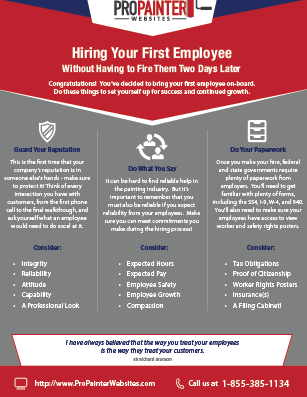Explore The Impact Of Seasonal Elements On The Effectiveness Of Industrial Exterior Painting And Determine The Optimum Times To Accomplish Enduring Outcomes For Your Project
Explore The Impact Of Seasonal Elements On The Effectiveness Of Industrial Exterior Painting And Determine The Optimum Times To Accomplish Enduring Outcomes For Your Project
Blog Article
Web Content Develop By-Fox Urquhart
When you're preparing an industrial exterior painting job, seasonal variables can make or damage your results. just click the next document 'll wish to consider just how temperature and humidity influence paint application and drying times. Picking the ideal period can ensure your paint sticks correctly and lasts much longer. But which periods are really the most effective for this kind of work? Allow's explore the key elements that can impact your task's success.
The Effect of Temperature on Paint Application
When you're intending a commercial exterior painting job, the temperature can considerably influence just how well the paint adheres and dries.
Ideally, you want to paint when temperature levels range between 50 ° F and 85 ° F. If it's as well cool, the paint might not heal properly, leading to issues like peeling or cracking.
On the flip side, if it's as well hot, the paint can dry out as well rapidly, protecting against proper bond and leading to an uneven finish.
You need to additionally think about the time of day; morning or late afternoon supplies cooler temperature levels, which can be extra desirable.
Constantly check the supplier's referrals for the certain paint you're utilizing, as they typically give support on the perfect temperature level array for optimal results.
Moisture and Its Effect on Drying Times
Temperature level isn't the only ecological element that influences your industrial exterior painting project; moisture plays a significant duty as well. https://www.housebeautiful.com/room-decorating/colors/g1957/best-new-color-combinations/ can reduce drying times substantially, influencing the overall quality of your paint work.
When the air is filled with wetness, the paint takes longer to cure, which can bring about issues like inadequate adhesion and a higher danger of mildew development. If you're repainting on a particularly humid day, be prepared for extensive delay times in between layers.
It's critical to monitor local weather and strategy appropriately. Preferably, go for moisture levels in between 40% and 70% for ideal drying.
Keeping these factors in mind ensures your project remains on track and provides a long lasting coating.
Best Seasons for Commercial Outside Painting Projects
What's the best season for your business outside paint tasks?
Spring and very early fall are normally your best bets. Throughout these seasons, temperature levels are light, and moisture levels are frequently reduced, producing ideal conditions for paint application and drying out.
Avoid summertime's intense heat, which can create paint to completely dry too swiftly, leading to bad attachment and coating. Similarly, winter season's cold temperature levels can prevent appropriate drying out and healing, taking the chance of the longevity of your paint task.
Aim for days with temperatures between 50 ° F and 85 ° F for optimal results. Bear in mind to inspect the regional weather report for rain, as damp problems can wreck your job.
Preparation around these aspects ensures your painting task runs efficiently and lasts much longer.
Conclusion
In conclusion, intending your commercial exterior paint projects around seasonal factors to consider can make a substantial difference in the outcome. By scheduling job throughout the suitable temperatures and moisture levels, you'll ensure better attachment and drying times. Remember to watch on local weather prediction and choose the correct time of year-- spring and early autumn are your best bets. Taking these actions will aid you achieve a long lasting and professional surface that lasts.
